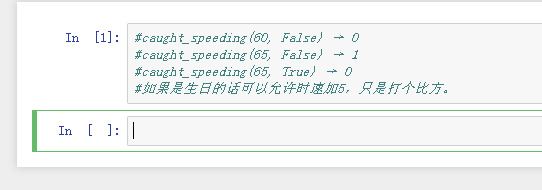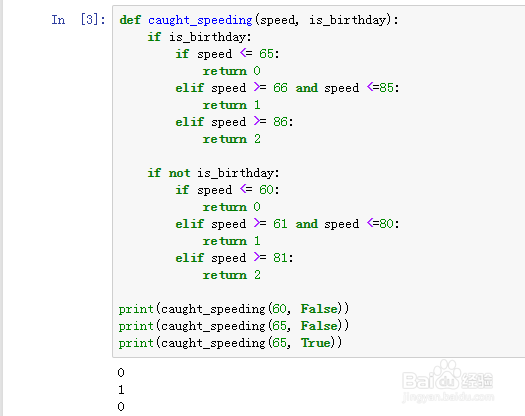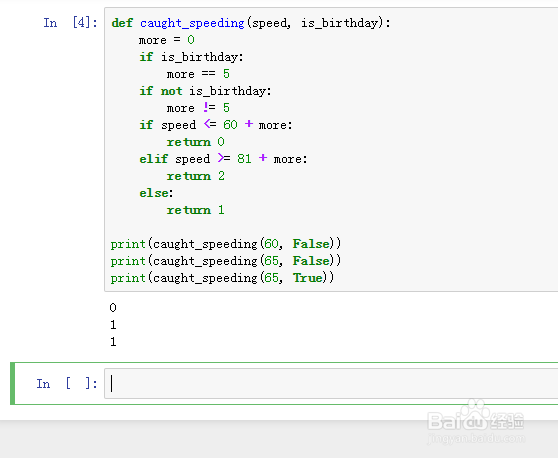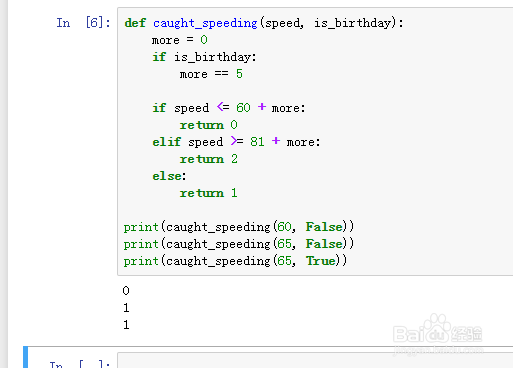如何用PYTHON编写是否超速程序
1、打开JUPYTER NOTEBOOK,新建一个PY文档。

2、#caught_speeding(60, False) → 0
#caught_speeding(65, False) → 1
#caught_speeding(65, True) → 0
#如果是生日的话可以允许时速加5,只是打个比方。
这里定义一下规则。

3、def caught_speeding(speed, is_birthday):
if is_birthday:
if speed <= 65:
return 0
elif speed >= 66 and speed <=85:
return 1
elif speed >= 86:
return 2
if not is_birthday:
if speed <= 60:
return 0
elif speed >= 61 and speed <=80:
return 1
elif speed >= 81:
return 2
print(caught_speeding(60, False))
print(caught_speeding(65, False))
print(caught_speeding(65, True))
这里是详细的步骤。

4、def caught_speeding(speed, is_birthday):
more = 0
if is_birthday:
more == 5
if not is_birthday:
more != 5
if speed <= 60 + more:
return 0
elif speed >= 81 + more:
return 2
else:
return 1
print(caught_speeding(60, False))
print(caught_speeding(65, False))
print(caught_speeding(65, True))
这是错误的示范。因为如果输入的数字超过范围就会跳过区域。

5、def caught_speeding(speed, is_birthday):
more = 0
if is_birthday:
more == 5
if speed <= 60 + more:
return 0
elif speed >= 81 + more:
return 2
else:
return 1
print(caught_speeding(60, False))
print(caught_speeding(65, False))
print(caught_speeding(65, True))
这也是另一个错误的示范。

6、def caught_speeding(speed, is_birthday):
more = 5
if is_birthday:
if speed <= (60 + more):
return 0
elif speed >= (61 + more) and speed <= (80 +more):
return 1
elif speed >= (81 + more):
return 2
if not is_birthday:
if speed <= 60:
return 0
elif speed >= 61 and speed <=80:
return 1
elif speed >= 81:
return 2
print(caught_speeding(60, False))
print(caught_speeding(65, False))
print(caught_speeding(65, True))
如果可以增加速度,那么可以额外定义变量。
